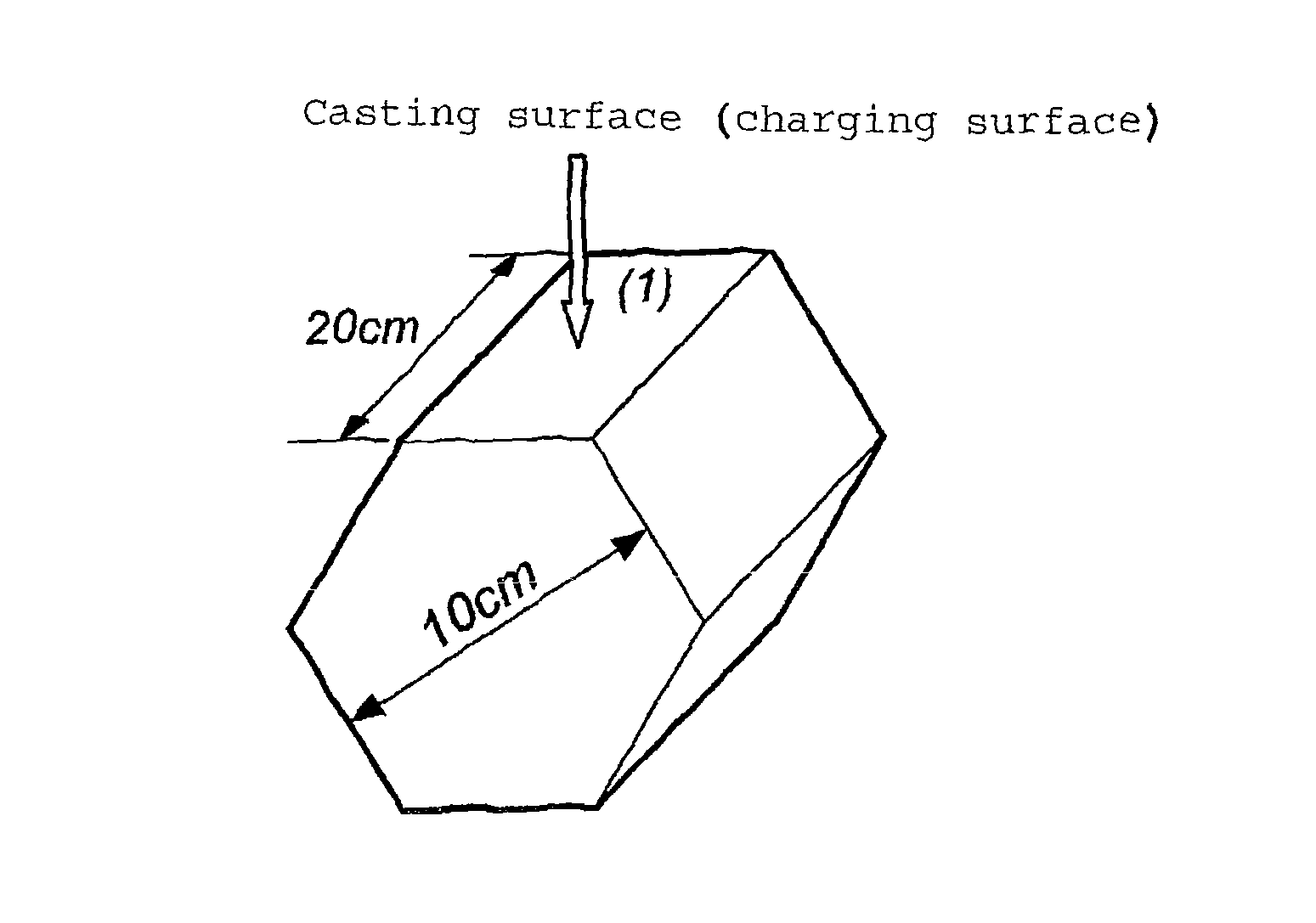Early strengthening agent for hydraulic composition
a technology of hydraulic composition and early strengthening agent, which is applied in the field of early strengthening agent for hydraulic composition, can solve the problems of increasing manufacturing costs, requiring many manpower and time, and hardly practical means for improving initial strength through design changes in these steps
- Summary
- Abstract
- Description
- Claims
- Application Information
AI Technical Summary
Benefits of technology
Problems solved by technology
Method used
Image
Examples
production example 1
Production of Glycerin / Ethylene Oxide Adduct A-7
[0236]230.3 g of glycerin and 1.4 g of KOH were introduced into a 2-L autoclave and then heated to 130° C. at a stirring speed of about 600 rpm. Then, the mixture was dehydrated under the conditions of 130° C. and 1.3 kPa for 30 minutes. Thereafter, the reaction mixture was heated to 155° C. The reaction mixture was reacted with ethylene oxide (hereinafter, referred to as EO) in an amount of 110.1 g (that is, EO in an amount of 1 mole per mole of glycerin). This reaction was carried out under the conditions where the temperature was 155° C. and the pressure was 0.1 to 0.3 MPa (gauge pressure). After a predetermined amount of EO was introduced, no drop in the pressure came to be observed (after the reaction was finished), and then the reaction mixture was cooled to a temperature of 80° C. to give the glycerin adducts in which 1 mole of EO had been added on average (A-7 in the table). EO in these adducts was distributed as follows: unrea...
production example 2
Production of Glycerin Adducts in which 1 Mole of Propylene Oxide was Added on Average
[0238]230.3 g of glycerin and 4.2 g of KOH were introduced into a 2-L autoclave and then heated to 130° C. at a stirring speed of about 600 rpm. Then, the mixture was dehydrated under the conditions of 130° C. and 1.3 kPa for 30 minutes. The reaction mixture was reacted with propylene oxide (hereinafter, referred to as PO) in an amount of 145.2 g (that is, PO in an amount of 1 mole per mole of glycerin). This reaction was carried out under the conditions where the temperature was 130° C. and the pressure was 0.1 to 0.3 MPa (gauge pressure). After the reaction was finished, the reaction mixture was cooled to a temperature of 80° C. to give the glycerin adducts in which 1 mole of propylene oxide was added on average (glycerin PO1 in the table). PO in these adducts was distributed as follows: unreacted glycerin (PO=0 mole), 26.3% (% is on a weight basis); the glycerin to which 1 mole of PO had been ad...
production example b-1
Production of Copolymer B-1
[0254]A glass reaction container (four-neck flask) equipped with a stirrer was charged with 355 g of water, the atmosphere in the reactor was substituted with nitrogen under stirring, and the temperature of the water was raised to 80° C. A solution in which 509 g of 60 weight % aqueous w-methoxypolyethylene glycol monomethacrylate (number of moles of ethylene oxide added on average: 120; ester purity: 97%), 35.6 g of Phosmer M (a mixture of mono(2-hydroxyethyl)methacrylic acid phosphate ester and di(2-hydroxyethyl)methacrylic acid phosphate ester, manufactured by Unichemical) and 2.0 g of mercaptopropionic acid had been mixed and dissolved, and a solution prepared by dissolving 2.9 g of ammonium persulfate in 45 g of water, were respectively added dropwise to the above reaction container over 1.5 hours. Thereafter, the mixture was aged for 1 hour, and then a solution prepared by dissolving 0.6 g of ammonium persulfate in 15 g of water was added dropwise ov...
PUM
| Property | Measurement | Unit |
|---|---|---|
| pressure | aaaaa | aaaaa |
| temperature | aaaaa | aaaaa |
| temperature | aaaaa | aaaaa |
Abstract
Description
Claims
Application Information
 Login to View More
Login to View More - R&D
- Intellectual Property
- Life Sciences
- Materials
- Tech Scout
- Unparalleled Data Quality
- Higher Quality Content
- 60% Fewer Hallucinations
Browse by: Latest US Patents, China's latest patents, Technical Efficacy Thesaurus, Application Domain, Technology Topic, Popular Technical Reports.
© 2025 PatSnap. All rights reserved.Legal|Privacy policy|Modern Slavery Act Transparency Statement|Sitemap|About US| Contact US: help@patsnap.com



